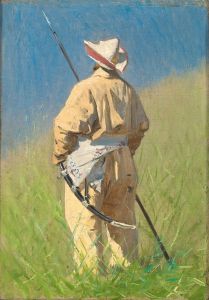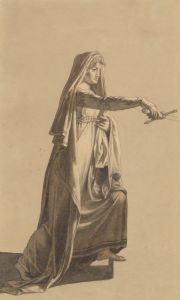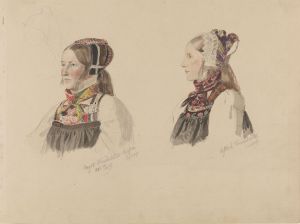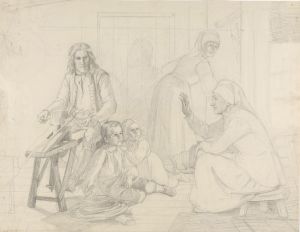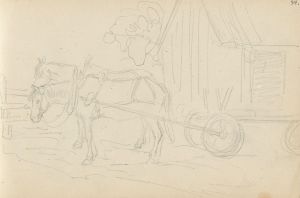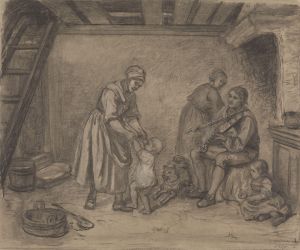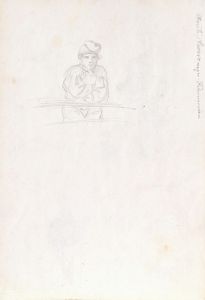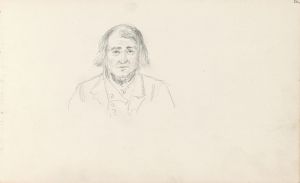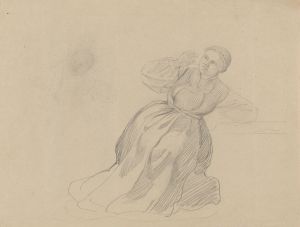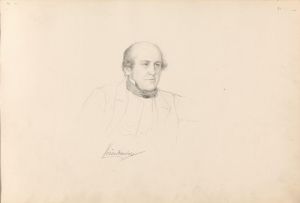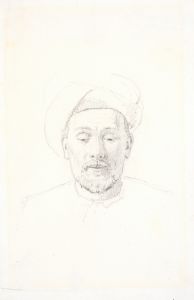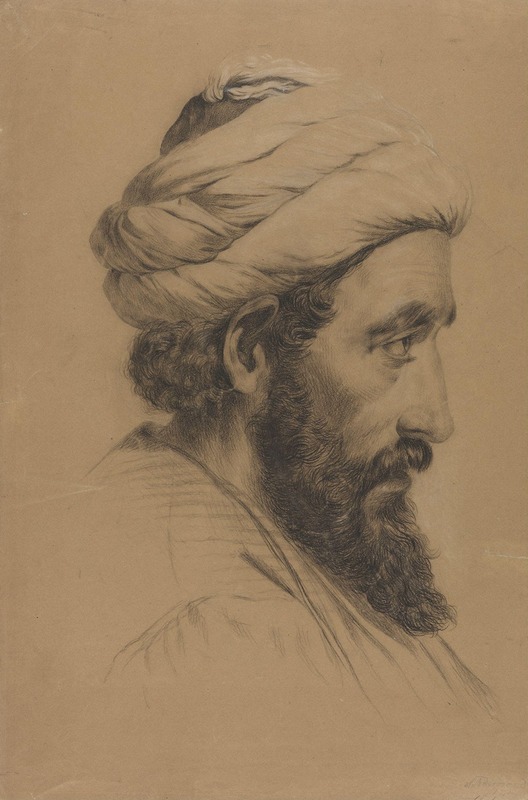
Mannshode med turban
A hand-painted replica of Adolph Tidemand’s masterpiece Mannshode med turban, meticulously crafted by professional artists to capture the true essence of the original. Each piece is created with museum-quality canvas and rare mineral pigments, carefully painted by experienced artists with delicate brushstrokes and rich, layered colors to perfectly recreate the texture of the original artwork. Unlike machine-printed reproductions, this hand-painted version brings the painting to life, infused with the artist’s emotions and skill in every stroke. Whether for personal collection or home decoration, it instantly elevates the artistic atmosphere of any space.
Adolph Tidemand was a prominent Norwegian painter in the 19th century, known for his detailed and culturally rich depictions of Norwegian life and folklore. One of his lesser-known works is "Mannshode med turban," which translates to "Man's Head with Turban." This painting is an example of Tidemand's exploration beyond the typical Norwegian themes that he is most famous for.
Adolph Tidemand was born on August 14, 1814, in Mandal, Norway. He studied at the Academy of Art in Copenhagen from 1832 to 1837 and later continued his studies in Düsseldorf, Germany, which was a significant center for art at the time. Tidemand became associated with the Düsseldorf school of painting, which emphasized detailed realism and often focused on historical and genre scenes.
"Mannshode med turban" is a portrait that reflects Tidemand's interest in diverse cultural representations. While the majority of his works focus on Norwegian subjects, this painting stands out due to its depiction of a man wearing a turban, suggesting an interest in or exposure to Eastern or Oriental themes. This interest was not uncommon in the 19th century, as many European artists were fascinated by the exoticism of the East, a trend known as Orientalism.
The painting itself is a study of a male figure, focusing on the head and shoulders. The man is depicted with a turban wrapped around his head, which is rendered with Tidemand's characteristic attention to detail. The use of light and shadow in the painting highlights the textures of the fabric and the contours of the man's face, showcasing Tidemand's skill in capturing both material and expression.
Tidemand's choice to paint a man with a turban could have been influenced by various factors, including the broader European interest in Orientalism during the 19th century. However, without specific documentation or commentary from Tidemand himself, the exact inspiration or purpose behind this particular work remains unclear. It is possible that this painting was a study or an exploration of different cultural attire, serving as an exercise in broadening his artistic repertoire.
Throughout his career, Tidemand was celebrated for his ability to convey the spirit and traditions of Norwegian culture. His works often depicted rural life, folklore, and historical events, contributing significantly to the national romanticism movement in Norway. Despite the focus on Norwegian themes, "Mannshode med turban" illustrates Tidemand's versatility and willingness to explore subjects outside his usual scope.
Adolph Tidemand passed away on August 25, 1876, in Christiania (now Oslo), Norway. His legacy endures through his extensive body of work, which continues to be studied and appreciated for its cultural and historical significance. While "Mannshode med turban" may not be as widely recognized as some of his other paintings, it remains a testament to his artistic curiosity and skill.





